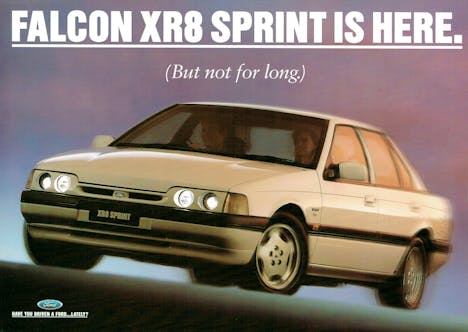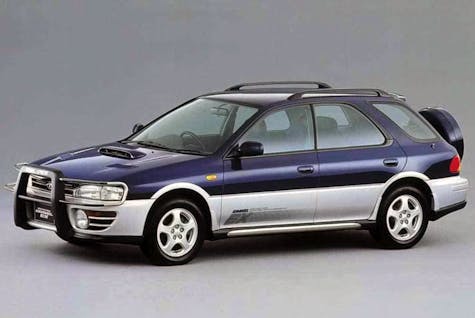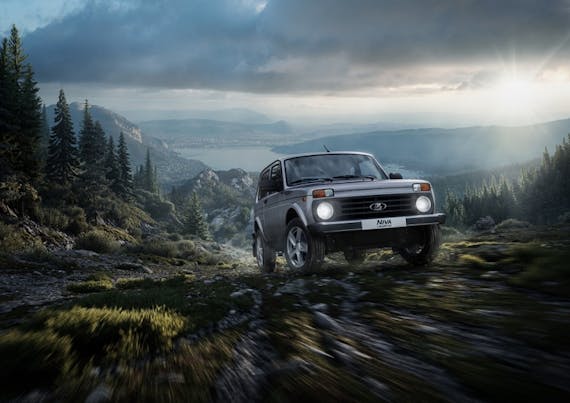Our Two Cents: Vehicles we would import to the U.S.
In this week’s installment of Our Two Cents, we asked the team here at Hagerty Media to first consider what they love about their car, their collection of cars, or their theoretical collection of cars. From there, they had the opportunity to expand that collection with one vehicle that could be legally imported into the United States. Free of charge, too—because last time I checked, dreams don’t cost a thing!
So let’s see what they came up when asked the question: What vehicle would you import and add to your collection, and why?
1971 Nissan 2000GT-R

Why would I want to import anything? Everybody knows the best autos are made right here in the good ol’ U-S-of-A! But, if I had to choose, it would be the 1971 Nissan 2000 GT-R. The Japanese coupe reads like a 7/8th-scale muscle car with enough ’60s swagger to make even the most patriotic hot-rodder swoon. I would want a left-hand drive one though—my brain can’t flip like that. — Cameron Neveu
Mercury M-series

I’d go with a 1950s Canadian-market Mercury M-series pickup. It is little else than a rebadged Ford F-100 truck, but it would be a fun way to have something that’s dead-simple American with a slightly funky flair. My wife is Canadian; she’d probably get a kick out of it, too. — Eric Weiner
1994 Audi RS2 Avant
I’ve flirted with shifting some things in my accumulation of vehicles to make room for a GT-R, but at the end of the day, I don’t want to have to reverse through the drive-through window at McDonald’s. It’s also time to replace the station wagon, an ’01 Volvo V70. So if I’m forced to import something, it might be a good idea to fill the Home Depot–hauler niche, too. That leaves one very specific answer: the Audi RS2 Avant. I’d prefer one that’s been hit but well-repaired, so I won’t be as concerned about preserving it. — Eddy Eckart
1990 Holden Maloo HSV

Party up front, work out back: Having owned, and liked, a Ford Ranchero and Chevrolet El Camino, I’d probably be interested in a 1990–92 Holden Maloo, Australia’s version of the El Camino.
Holden, GM’s Australian manufacturer, had a Holden Special Vehicles division, which took the Holden ute (that’s what they call car-based trucks down under) and hot-rodded it with a 5.0-liter V-8 and a lot of nice performance features, right down to a Momo steering wheel. “An exciting mix of good ol’ Aussie ute and HSV magic makes for a fun classic,” says Australia’s Carsguide website, and who am I to argue? — Steven Cole Smith
1990 Toyota Celsior
I once stated that the Lexus LS400 blew everyone away in 1990, and nothing has changed my mind since then. Except for maybe its JDM sistership named Celsior, as this Toyota had more technology available than the stateside Lexus. Those items included a navigation screen, a VIP-level rear seat accommodations with redundant cabin controls, decadent velour upholstery (okay, some early LS400s did come with velour), and a fax machine in the glove box. I want a fax machine in my next luxury car, and that will never change. — Sajeev Mehta
1993 Ford Falcon EB XR8 Tickford Sprint

Give me Ford of Australia’s mainstream sedan with a 5.0 V-8 and five-speed and a suspension breathed on by Tickford Engineering. It is basically a four-door Mustang but better. I have very fond memories of hooning one of these through the Grampians National Park west of Melbourne back in the day, and will always have a soft spot for it. — Aaron Robinson
1996 Subaru Impreza Gravel Express

This is an affordable JDM wagon with a WRX motor, and unique and model-specific OEM styling additions that predate pretty much all of the cross-country and all-road-type wagons that came later. The Gravel Express is easy to modify in multiple directions, and it has an excellent name that alludes to its capability and the Impreza’s rallying pedigree in general. — Alex Sobran
1996 Ford Ka
I will take a first-generation Ford Ka, the tiny European-market city car that looked utterly unlike anything else when it debuted in 1996. I like small cars and this one is tiny indeed and its jellybean styling has aged well. Handling dynamics were done under supervision of the famous Brit Richard Parry-Jones, who also was responsible for the first-gen Ford Focus’s lauded chassis tuning. — Joe DeMatio
Chevy Opala

I’ve wanted a Chevy Opala for as long as I’ve known they’ve existed, which is about 10 years. They’re based on the Opel Rekord C and were sold in Brazil. Powered by 250-cube inline-sixes, the SS coupes were basically Brazil’s muscle cars, and they look fantastic. I have daydreamed about getting my hands on one and swapping in a hot-rodded version of GM’s 4.2-liter DOHC inline-six. — Brandan Gillogly
1996 Nissan Stagea 260RS

I would grab a Nissan Stagea 260RS. Why? Well because it is essentially a GT-R wagon. A creation by Autech (a tuning and modifying subsidiary of Nissan), the Stagea Station wagon received the running gear out of an R33 GT-R. While they don’t look that great in their standard configuration, we’re in luck: Bolting on an R34 GT-R front clip is no problem and a common upgrade. — Greg Ingold
Lada Niva

I think tiny 4x4s are pretty cool, so I’ve always had a thing for the Lada Niva. They’re cheap, reliable, and absurdly capable, with a locking center differential and two-speed transfer case. Probably pretty easy to put back on all four wheels if it rolls over, too. I know this video is fake, but I’m pretty sure the off-road half pipe is well within a Niva’s wheelhouse. — Stefan Lombard
***
Check out the Hagerty Media homepage so you don’t miss a single story, or better yet, bookmark it. To get our best stories delivered right to your inbox, subscribe to our newsletters.








I have a US-spec BMW E36 M3 sedan. I would prefer to have the European version.
A late Aussie GM ute but not much else.
The Mercury trucks are not a real imports. You can just drive over and get one. We see them here in Ohio.
I would love to have had the Opel From Europe Lotus built for GM. The little mid engine roadster.
You still have to import it from Canada with all the paperwork that entails. I’ve dealt with Canadian and UK imports before, they are just as difficult to title after you take delivery.
YMMV. I brought a car in from Canada. I completed the NHTSA and EPA forms myself but the Customs guy barely looked at them. I showed them a VIN stamp in the chassis. We spent most of the time discussing Customs value. I asked them to stamp the paperwork otherwise they would have just handed it back to me. Getting it registered took about the same time as transferring a US registered vehicle. Most of the there was spent discussing value as well.
YMMV indeed. Getting a not-American car titled in my county in Texas is a whole ordeal. Doesn’t matter if it came from Canada or Iran (if that’s even possible) as its a huge time commitment to make it legal with multiple stops along the way.
Texas is another country.
😉
You are not wrong.
I wonder if that would be true if you had it titled in another State first. If not, you could have Kyle import and title the car and “sell” it to you.
That would probably be easier, yes. Not just in another state, but in a smaller county in the same state.
Or you could just find an American one and rebadge it as a Mercury. That way you could avoid all the import issues.
Vehicles older than 35 years in Alabama only require a bill of sale. You can’t even get a title for one older than 35.
Right. When I lived in Georgia, the slang term for a stolen car was that it “has an Alabama title.”
Not so easy. As a Canadian, the biggest challenge in restoring Canada only models is getting the correct badging. Whether it be a Mercury truck, a Fargo pickup, Meteors or GM products like Beaumonts, Acadians etc. the first question a new owner is asked is; “does it have all of it’s trim?” There are no reproductions of trim for these vehicles so you want to find them intact and preferably with good trim as Canadian winters make vintage pot metal look like the surface of the moon. That said, a very popular pastime for a Canadian vehicle owner is to take your restored ride to US shows and wait for the locals to ask why that Chevelle has a Pontiac emblem on it.
Might find a Lada in Canada. We used to get them in to work on. Just a bad Fiat.
The Lada Niva was quite capable, but only for the first few weeks of ownership. We had them in Nova Scotia. The switch gear, wiring and other electrical components were laughable. The bodies must have been made from recycled rust because you could hear them rust on the way home from the dealership. I tried to take my sickly cat to the vet in a two year old Lada but it clawed its way through the floor in about 10 minutes. The cat survived without without veterinary intervention and outlived the Lada by a good five years.
A friend had a Nova and had the transmission bearings replaced twice under warranty and when they failed again had the dealer replace them the third time with bearings he supplied – a mixture of high quality industrial bearings where possible and genuine FIAT parts. No more TRANSMiSSION problems for the next 2 years until I i r c, it was turned into a much more compact vehicle by an F250.
I drove one for a few weeks that we had traded in ( while still under warrantee) and it was rough as a cob.
Another friend was going to trade his ‘72 Pontiac Firenze (Vauxhall Viva HC) in on a new Lada car when they first came out. The dealer offered him $75 for the trade in so I gave him $76 and it outlasted 2 Ladas and continued for another 7 years after that – and a Firenze was known as a real lemon -(I don’t agree ———-)
Lada cars were good Fiat 124’s.
Lada Niva’s were Russia’s answer to the Bronco.
(both were available in Canuckistan but you’d be VERY hard pressed to find either as they all have rusted away).
Lads – a terrible copy of an awful car!!! How do you spell “fix it again Tony “ in Russian????
Internet digitization has made some searches more obscure than others, but when Fiat built the Lada Togliatti plant in the Soviet Union to Soviet specifications in the 1970’s, it was apparently the largest car plant in the world and the only car plant in the world that still used hot rolled steel in their body panels. Hot rolled steel used to be an industry standard here as well. Anyone familiar with 80’s eastern European rally car championships will know that Lada were very tough, reliable and highly desirable on that circuit. Perhaps that is why Renault bought the company, followed by General Motors who sold it back to the Russians after the imposition of trade sanctions.
I know very little about any of these, but based on pictured looks alone, I’d go for Eddy’s Audi RS2 Avant. Any “shooting brake” with as bold colored interior at that one in the photo has will grab anyone’s attention, and I am attracted to the lines (at least from a 1994 standpoint). Throw in a fax machine in the glovebox, and I’m REALLY hooked, man!
The RS2 is a Porsche (check it out, you may be impressed!)
The Skylines have always intrigued me, but I don’t think I could ever really get used to shifting with my left hand
Youi will! It just takes a little practice.
I have rented floor shift cars in england, and jamaica. I really expected shifting to be an issue, but actually found it very easy to adjust to the left hand shift. I was surprised how natural it felt after the first couple of days.
I’ve found that even after 2 weeks in a UK rental car with manual transmission, I had to concentrate to properly make the shift from 4th to 5th. It felt like I had to “pull it to the right” farther than usual. I hit 3rd several times at motorway speeds, which the car and my wife did not like.
This list needs more sweet 80s German plaid cloth. They got all the cool stuff over there.
The first release (1999) Audi RS4 is becoming eligible this year. I much prefer the look and grunt of those over the RS2, and even over the successor RS4 that did get released in the US.
YES.
Lotus Carlton. 170 mph with Lotus handling and comfort.
Don’t know where you live Dan, but I sure would like to live there. Where I live we can only do 170 mph in an airplane.
The XR8 was based on the Sierra not the Mustang, as I’m sure the author is aware. Just want to augment his comments for clarity in case somebody thinks that’s a FOX chassis! I drive the 1989 US import version with 2.9L V6 motivation.
The South African XR8 was a Sierra, but I was always under the impression that the EB Falcon XR8 mentioned by Mr. Robinson was purely an Aussie design.
Falcon XR8 is as described by Aaron & Sajeev. Mustang-like, not Sierra-like.
Here, a link to compare!
https://postimg.cc/9wrMPT52
Can’t be an Aussie design if it was hacked onto a Mustang Fox chassis, can it? Look at a 4-door Sierra (in the US it was dubbed a Scorpio) then look at the OZ XR8. The styling creases, doors, side glass, lots of details are pretty darn lifted from Sierra 4-door. Dunno if your archives have a Scorpio pic from 1989 or so. Compare them. I would attach a pic here if I could, fellas. Hey, if I got it wrong, I got it wrong. But sure looks like a Sierra 4-door to me.
Hi Norm, it was not hacked onto a Fox chassis. On the chance we didn’t make it clear yet, Aaron Robinson (the author of that part) mentioned the Mustang as a point of reference, not as a suggestion the EB Falcon and Fox Mustang share the same body/chassis parts.
And the five-door Merkur Scorpio was a Ford Scorpio/Ford Granada Mk III, the five-door Sierra never came to the US.
Cheers. The Scorpio and Granada were 4-door (5 if you count the hatch) Sierra-based. Dash, hubs, and body shell were done up differently. But it’s like saying the T-Bird and Cougar Foxes were not Fox-based. The Scorpio and Sierra were same basic chassis (racks, axles, most chassis parts and bushings) family. That’s what I was saying. I think we’re in violent agreement?
Very violent agreement, I am glad we had this discussion.
See comparison photo. LH Sierra 4-door, RH Oz XR8. Sure looks like it was Sierra-derived and a 5.0L engineered into it. Maybe I’m wrong, but whew, doesn’t look Mustang-y at all.
https://postimg.cc/9wrMPT52
I’d bring in a Ford Escort RS Cosworth (the one with the big wing). Fast, refined, 4WD and a real crowd pleaser.
The Ka’s “evil twin”, the SportKa would be a better choice.
1992 Toyota Soarer with the 2.5 turbo.
I think the sub-title should have been Whose idea was the this?
I just bought an original 1953 Mercury M100 pickup. 1953 was the anniversary year for Ford, so these trucks had a few special features – nothing compared to what you would expect these days. With a 239 ci flathead V8, it moves along okay. My plan is to keep it original, not hotrod it, and drive it on the appropriate roads. I’m glad I was able to find a Mercury pickup, being Canadian.
I’ll take the Mercury. There are many rebadged cars in Canada that are versions of U.S. models besides the Mercury though… think of the Pontiac Beaumont as another one but there are so many.